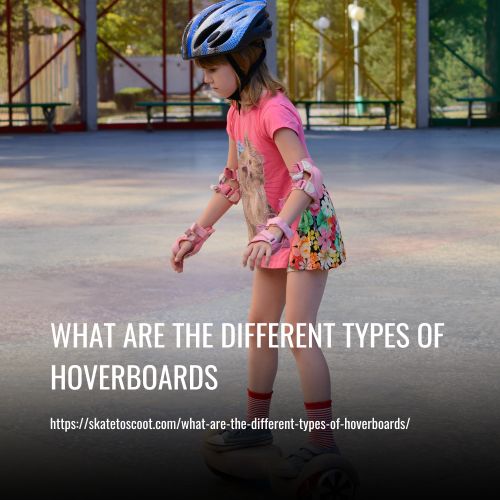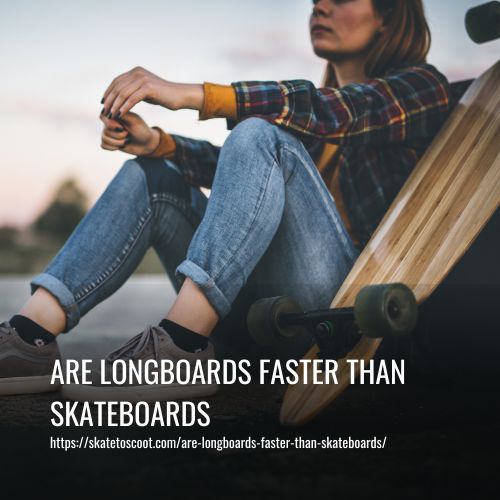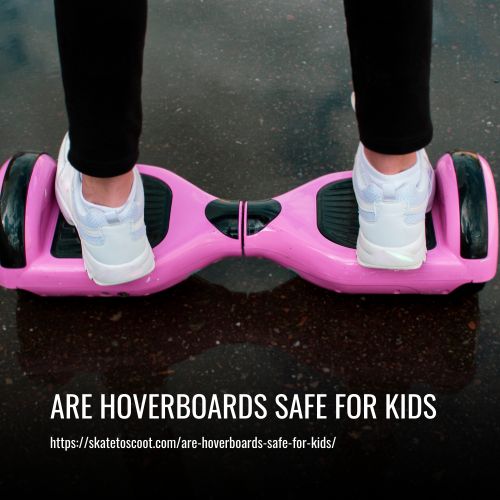As an Amazon Associate we earn from qualifying purchases.
There are several different types of hoverboards available on the market today. The classic hoverboard is a popular choice, with a maximum speed and wheel size that vary depending on the model. Some hoverboards have four wheels, like the Hover-1 Chrome and Hover-1 Titan, which offer powerful motors and higher speeds. There are also self-balancing scooters designed specifically for kids, equipped with features such as elbow pads and larger wheels for added safety and stability.
Here are The Different Types Of Hoverboards:
- Classic Hoverboards.
- Off-road Hoverboards.
- Self-balancing Hoverboard.

Types of hoverboards
When it comes to hoverboards, there are three main types to consider. The first type is the classic hoverboard, which features a gyroscope and a standard body style. However, it doesn’t have a smart balance mode.
1. Classic Hoverboards:
Classic hoverboards are a popular type of hoverboard that are designed for use on paved streets and sidewalks. These hoverboards typically have a wheel size of 6.5 inches and do not include smart balance mode. Some classic hoverboards on the market include the Hover-1 Chrome and the Hover-1 Titan.
These hoverboards are equipped with powerful dual motors, a rechargeable battery, and can reach a maximum speed of 15 kilometers per hour. The larger 10-inch wheel size provides a smoother ride and allows the hoverboard to navigate through rough terrain and uneven surfaces with ease.
2. Off-road Hoverboards:
Off-road hoverboards, also known as heavy-duty or all-terrain hoverboards, are designed to navigate through off-road areas such as gravel, unpaved grounds, and rough terrains. These hoverboards are equipped with larger wheels, typically around 8 inches, and powerful motors that provide excellent traction and stability on uneven surfaces.
One popular off-road hoverboard is the Hoverboard, which features all-terrain wheels, a great range, and impressive speed. It comes with 8.5″ rugged tires and 400W dual motors, allowing it to climb inclines up to 20 degrees and handle any type of terrain. With a weight capacity of up to 260 lbs, it is suitable for various riders. The board is powered by UL 2722 certified LG safety batteries, which take around 2.5 hours to fully charge and provide a range of over 10 miles. This hoverboard also offers a sense of safety with its UL certification and no-fall drive system.
Additionally, it comes with LED lights for nighttime visibility and a Bluetooth application for controlling the board’s speed, range, and steering sensitivity. Another popular off-road hoverboard is the Swag Tron T6 Outlaw, which features 10-inch wheels and a weight capacity of up to 420 lbs. It is equipped with a 300W dual motor that enables it to handle bumpy and harsh terrains, as well as climb 30-degree slopes.
3. Self-balancing Hoverboard:
Self-balancing hoverboards, also known as self-balancing scooters or hoverboards, are personal transportation devices that use internal gyroscopes to maintain balance and levelness with the ground. These devices are designed to be ridden by individuals of different ages and sizes, with varying features and capabilities to cater to different needs.
One popular type of self-balancing hoverboard is the Tomoloo board, which is specifically designed for children. It comes in colorful and attractive options such as black, cotton candy blue, and radiant pink. The board features an RGB LED light ring installed on the front and back gears and around the wheels, adding a touch of style and visibility. Additionally, it has a built-in Bluetooth speaker to provide music during rides. With a weight capacity of up to 165 lbs, a range of 8 miles, and a top speed of 7.5 miles per hour, this hoverboard offers a fun and convenient mode of transportation for kids.
Another option is the Gotrax hoverboard, which offers a balance of affordability and performance. Equipped with dual 200W motors (400 watts), it can reach speeds of up to 7.4 miles per hour and has a fast-charging technology that allows it to charge in just 90 minutes. Depending on weight and terrain, its range can go up to 3 miles. This hoverboard utilizes gyroscopic technology to enable riders to steer, accelerate, and stop with ease. Safety is also a priority, as it is UL2272 certified and features non-slip footpads and elastic tires for stability. With bright LED lights and a choice of 7 colors, it offers a visually appealing ride for all age groups.
For those prioritizing safety, the Razor Hovertrax 2.0 is a trustworthy option. This hoverboard can reach a maximum speed of 8 miles per hour and has a range of approximately 6-8 miles on a full charge. It features dual 350W motors for powerful performance and front multicolored LED lights for added visibility. While it lacks a Bluetooth speaker, Razor prioritizes safety and quality, making it a reliable choice.
More types of Hoverboard
In addition to the popular models mentioned above, there are several other types of hoverboards available in the market.
1. One-Wheel Hoverboard:
The one-wheel hoverboard is a popular choice for those who enjoy activities like snowboarding or skateboarding. With its central wheel design, this type of hoverboard offers easy maneuverability. Riders can shift their weight to turn and lean forward to quickly stop.
It is important to note that one-wheel hoverboards are best suited for paved roads. The ideal one-wheel hoverboard features easy control, a rough top surface for better grip, and LED lighting that runs through the board for added style.
2. Two-Wheel Hoverboard:
The two-wheel hoverboard is widely regarded as one of the best electric hoverboards available. This type of hoverboard is self-balancing and easy to ride, making it suitable for both beginner and experienced riders. When it comes to wheel size, there are options to choose from, including medium wheels, small wheels, and broad wheels. The medium wheels are the most common and are considered the best choice for quick travel.
On the other hand, broad wheels are found on all-terrain models and are designed to handle uneven surfaces with their increased grooves. For kids and those looking for a lightweight option, the small wheels, typically around six to six and a half inches in size, are a great choice. Regardless of the wheel size, the two-wheel hoverboard provides a smooth and enjoyable ride, making it a popular mode of transportation for many.
3. Four-Wheel Hoverboard:
Looking for something a little more stable in the type of hoverboard you want? The four-wheel hoverboard is more advanced, more stable, and easier to move and control. With larger wheels and powerful motors, these hoverboards provide a smooth and enjoyable ride. They are perfect for beginner riders or those who prefer a more stable option.
Some popular models include the Hover-1 Chrome and the Hover-1 Titan, both equipped with features like built-in Bluetooth speakers and rechargeable batteries. Four-wheel hoverboards are also ideal for riding on rougher terrain or uneven surfaces, making them a versatile mode of transportation. So, if you’re looking for a hoverboard that offers stability, control, and a smooth ride, consider a four-wheel hoverboard.
4. Jet-Propelled:
Jet-propelled hoverboards are a type of high-tech board that utilizes electromagnetic technology and jet propulsion to create air pressure and enable the board to float. These cutting-edge hoverboards are reminiscent of futuristic movies, offering riders a unique and thrilling experience. Jet-propelled hoverboards are known for their high price tag due to the advanced technology and premium materials used in their construction, allowing them to reach impressive heights of up to 3000 meters.
Are Self-Balancing Hoverboards the Same as One-Wheeled Hoverboards?
No, self-balancing hoverboards and one-wheeled hoverboards are not the same thing. While they both operate on similar principles of balance and motion, they have some critical differences in design and functionality.
Self-balancing hoverboards have two wheels, and one-wheeled hoverboards have just one wheel in the center of the platform. Self-balancing hoverboards use sensors and gyroscopes to maintain balance and stability. They are often used for recreation or transportation and are popular with kids and adults alike. They are also easier for beginners to ride because they are more stable than one-wheeled hoverboards.
On the other hand, one-wheeled hoverboards require more riding skill, relying on the rider’s balance and weight distribution to maintain stability. They are often used by experienced riders who want a challenge or by professionals who use them for performances, demonstrations, or extreme sports activities. They require a greater balance and skill to operate and are used for off-road riding or performing tricks and stunts.
Do Two-Wheeled Hoverboards Have the Same Technology as Other Hoverboard
Two-wheeled hoverboards, although they may share some similarities in technology with other hoverboard types, have their own distinct features. Similar to self-balancing and one-wheeled hoverboards, two-wheeled hoverboards use sensors and gyroscopes to maintain balance and stability while riding. However, the main difference lies in the number of wheels.
Two-wheeled hoverboards have two wheels, making them more stable and easier to ride for beginners. They also tend to have more powerful motors, which allows for better performance on uneven terrains. Additionally, the maneuverability of two-wheeled hoverboards sets them apart, making them popular among commuters who need to navigate through tight spaces and traffic.
Pricing-wise, two-wheeled hoverboards are generally more affordable compared to one-wheeled hoverboards. However, the choice between the two ultimately depends on personal preferences and intended use. Overall, two-wheeled hoverboards offer a smooth and enjoyable riding experience, making them a great option for those looking for a reliable and affordable hoverboard.
FAQs
When selecting a hoverboard, it is essential to consider several features:
– UL Certification: Look for a hoverboard that is UL-certified for safety and reliability.
– Charging Time: Opt for a hoverboard that has a shorter charging time to minimize downtime between rides.
– Maximum Speed: Consider the maximum speed of the hoverboard, ensuring it aligns with the rider’s comfort and skill level.
– Range: The range refers to the distance the hoverboard can travel on a single charge. Determine the desired range based on your riding needs.
– Weight Capacity: Check the weight capacity of the hoverboard to ensure it can safely accommodate your weight.
– Tire Selection: Consider the type and size of tires based on the terrain you plan to ride on.
Hoverboards are available at various price points, ranging from $100 to $700. However, our research suggests that the ideal price range for a high-quality hoverboard is between $300 and $600. Investing within this price range offers fast charging times, longer battery duration, higher maximum velocity, and extended riding distance.
The ability to ride a hoverboard in the rain depends on the specific model. Some hoverboards come with water resistance, as indicated by their IP certification for waterproof technology, and can withstand light sprinkles. However, it is generally recommended to avoid riding hoverboards on wet surfaces to minimize the risk of exposing the motor and battery to water, which can cause damage.
Conclusion:
No matter what type of hoverboard you choose, one thing is for sure: you’re in for an exhilarating ride! Whether you prefer the classic style, the off-road adventure, or the futuristic design, there’s a hoverboard out there to suit your every need.
So, strap on your helmet and get ready to hover into the future with style and confidence!
Amazon and the Amazon logo are trademarks of Amazon.com, Inc, or its affiliates.



